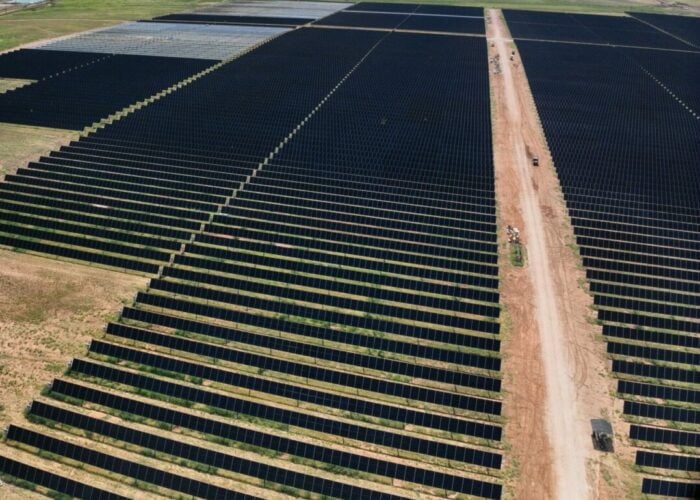President Obama signed an executive order that the administration hopes will entice businesses to commit to lowering greenhouse gas emissions and supporting renewable energy and efficiency initiatives.
Taking Obama’s lead, federal suppliers, including GE, Honeywell, IBM and HP, are also announcing their attempts at cutting GHG emissions.
Try Premium for just $1
- Full premium access for the first month at only $1
- Converts to an annual rate after 30 days unless cancelled
- Cancel anytime during the trial period
Premium Benefits
- Expert industry analysis and interviews
- Digital access to PV Tech Power journal
- Exclusive event discounts
Or get the full Premium subscription right away
Or continue reading this article for free
The executive order aims to lower greenhouse gas (GHG) emissions 40% in the next ten years from the 2008 level. This announcement is in accordance with the United States’ promise to lower GHG emissions by 26-28% lower than 2005 levels by 2025, which president Obama announced in November 2014.
The White House hopes this will address environmental threats and climate change. According to the White House, this will save taxpayers up to US$18 billion dollars and will also increase the amount of renewable energy the federal government uses to 30%.
The Obama Administration will have a scorecard to track the emissions and progress of the suppliers. These suppliers consist of nearly 40% of Federal contract money, or over US$187 billion in spending.
The federal government is the largest consumer in America, and therefore, they hope their reductions will have a large impact.
The administration hopes that the executive order will help the commercial sectors renewable energy commitments grow.
Rhone Resch, president and CEO of the Solar Energy Industries Association (SEIA), said: When it comes to fighting climate change and transitioning to a clean energy future, President Obama is once again leading by example. We applaud his tireless efforts – and those of his administration. Clearly, climate change threatens our economy, our future progress, our health and safety, and even our way of life. “We’re also prepared help lead this effort. As the fastest-growing source of renewable energy in America, the U.S. solar energy industry is uniquely poised to help.
“Think of all the wasted space on top of federal buildings – many of them larger than football fields. We’re ready to work with federal agencies to turn those dead zones into vibrant solar arrays, generating clean, reliable and affordable electricity for our federal workforce.”
Resch added: Today, the U.S. solar industry employs 174,000 Americans nationwide – more than tech giants Apple, Google, Facebook and Twitter combined – and pumps nearly $18 billion a year into our economy. This remarkable growth is due, in large part, to smart and effective public policies, such as the solar Investment Tax Credit (ITC), Net Energy Metering (NEM) and Renewable Portfolio Standards (RPS).
“By any measurement, these policies are paying huge dividends for both the U.S. economy and our environment. Last year, solar also helped to offset more than 20 million metric tons of harmful carbon emissions, which is the equivalent of removing 4 million cars off U.S. highways and roads. The U.S. solar energy industry has a proven track record of helping to fight climate change – and we’re prepared to do even more in the future.”
Geoffrey Underwood, a project developer with Hanwha Q CELLS USA, told PV Tech last year: “Public sector demand is very significant [to the commercial scale solar market]. On a federal level there is demand through various federal agencies which all have a requirement to create and execute their own Renewable Portfolio Standard (RPS) and carbon offsets and these tend to include solar. Demand from them is typically in a PPA type structure. The next largest in the public sector is the military, which has substantially increased its appetite for solar projects. They have similar RPS targets.”
A goal of the executive order, and the participation of the companies is to set an example to the rest of the private sector, leading to more demand for commercial solar.
This initiative by federal suppliers, committing to lower GHG emissions and some pledging to higher usage of renewable energy or to be more sustainable, is an attempt at widening the influence of renewables in the private sector. In 2014, residential solar deployment overtook commercial solar.






